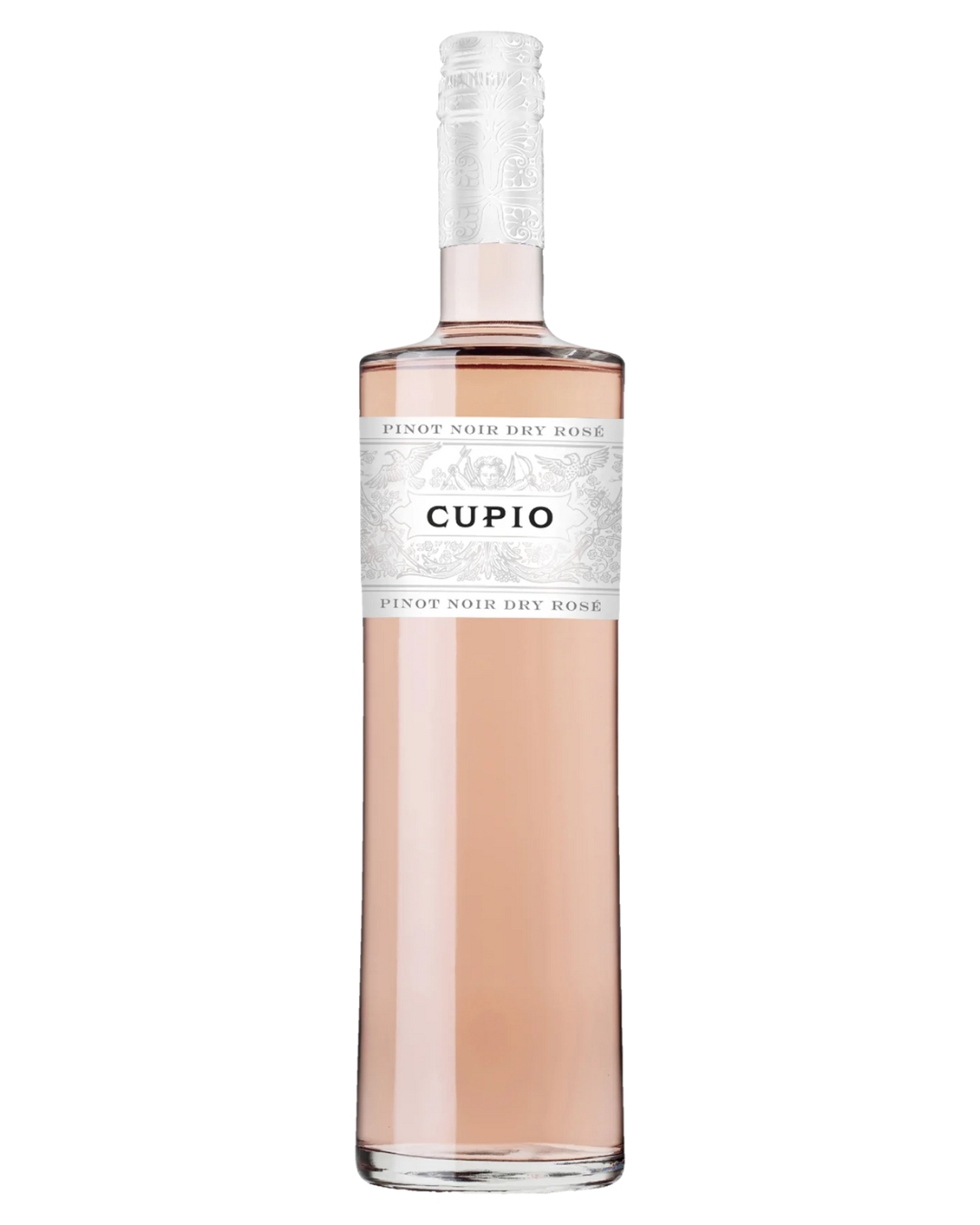The world of wine can be an intimidating one to navigate. Seriously—from wineries to bottle shops, it can, at times, feel like sommeliers and sales people are speaking a whole new language. If you’re someone who catagorises your wines by “bubbly,” “white” and “red,” terms like “tasing notes,” “tannins,” and “full-bodied” can leave you feeling more confused than confident when you’re just trying to enjoy a glass. But fear not—you’re not alone, and the world of wine doesn’t have to be as elusive or complicated as it may seem.
Ahead of this holiday season, Cosmopolitan Australia has tapped a handful of wine experts to decode the most common (and often confusing) wine lingo, so you can talk the talk and walk the walk—whether you’re picking out a bottle at the store, chatting with your friends at a party, or choosing the perfect wine pairing for your latest culinary creation.
So, grab a glass, sit back, and scroll on while we demystify the language of wine. After all, it’s meant to be fun, not frightening. Whether you’re a seasoned wine lover or a newbie trying to decode a menu, we’re here to help you sound like a pro—and who knows, you may even find a new-found appreciation for your fave drink.
Related: Want To Throw a Dinner Party? Here’s Our Top Tips For How To Host
wine terminology, explained...
The basics
- Varietal or Variety: Refers to the specific grape variety used to make the wine (e.g., Shiraz, Chardonnay, Pinot Noir). If no variety is listed, it might be a blend or follow traditional naming (e.g., Bordeaux).
- Region or Origin: This indicates where the grapes were grown—hot tip: wines from specific regions often carry distinct flavour profiles. Examples include Australia’s own Barossa Valley, or Marlborough or Tuscany.
- Vintage: The year the grapes were harvested. Older vintages are not *necessarily* better; it depends on the region and grape.
- Non-Vintage (NV): This indicates that the wine is made from a blend of grapes from different years, and is often seen in sparkling wines.
- Tasting Notes: This one could be the way to faking your way to wine-expert-status! Tasting notes are descriptive text about the wine’s flavours and aromas (for example, “Notes of blackberry, chocolate, and vanilla”). Tasting Notes help shoppers understand the wine’s flavour profile before buying.
Sparkling wine terminology
- Brut: A term used to describe dry sparkling wines.
- Cuvée: A term often used to denote a specific blend or batch, especially in sparkling wines.
- Méthode Traditionnelle: Sounds fancy, right? This is a process for making sparkling wine where the bubbles are created naturally through secondary fermentation in the bottle. Champagne is made this way and some premium Australian Sparkling wines like Croser.
Descriptors of flavour & texture
- Tannins: A naturally occurring compound in grape skins and seeds that gives red wine structure and a slightly bitter, drying sensation.
- Body: Refers to the weight or richness of the wine in your mouth (descriptors include light, medium and full-bodied).
- Crisp: Indicates a wine with high acidity, often refreshing and zesty.
- Dry: A wine with little to no residual sugar; opposite of sweet.
- Oaky: Describes flavours imparted by oak barrels, such as vanilla, toast, or smoke.

Wine Regions & What They're Known For
Okay, ready to take things up a notch? While there are many winemaking regions around the world, some are renowned for having *extra* fabulous wines. There are several factors that contribute to the quality and/or taste of a regions wine, including the climate, soil and weather during the grape harvest.
We are spoilt for choice on our own shores, with Australia being home to some world-class wine regions. Some of the most famous—which you’ll often hear wine folk reference—include:
Barossa Valley, South Australia
Style: Rich, bold, and full-bodied wines with intense fruit flavours. Known for iconic red wines.
Best Varietals:
- Shiraz: The flagship varietal, producing robust wines with dark fruit, spice, and a velvety finish.
- Grenache: Often used in blends or single-varietal wines with vibrant red berry notes.
- Cabernet Sauvignon: Full-bodied with cassis, mint, and structured tannins.
Adelaide Hills, South Australia
Style: Elegant, cool-climate wines with fresh acidity and vibrant aromatics.
Best Varietals:
- Sauvignon Blanc: Crisp, zesty wines with tropical and citrus notes.
- Chardonnay: Modern, leaner styles with mineral undertones and subtle oak.
- Sparkling Wines: High-quality sparkling wines, often made from Chardonnay and Pinot Noir.
Margaret River, Western Australia
Style: Balanced, high-quality wines that combine New World fruit purity with Old World structure.
Best Varietals:
- Cabernet Sauvignon: Elegant and structured, often blended with Merlot.
- Chardonnay: Complex and creamy with stone fruit and a touch of oak.
McLaren Vale, South Australia
Style: Warm-climate wines with intense, ripe flavours and silky textures.
Best Varietals:
- Shiraz: Plush and rich with dark berries, chocolate, and spice.
- Grenache: Bright and juicy, showcasing red fruit and floral characters.
- Cabernet Sauvignon: Ripe and fruit-forward with soft tannins.
- Mediterranean Varietals: Tempranillo, Sangiovese, and Vermentino thrive in this climate.
Tasmania
Style: Cool-climate wines with finesse, bright acidity, and pristine fruit expression.
Best Varietals:
- Pinot Noir: Light to medium-bodied with red cherry, earthy undertones, and bright acidity.
- Chardonnay: Crisp, minerally styles, often used in still and sparkling wines.
- Sparkling Wines: Among Australia’s best, using traditional methods with elegance and finesse.
- Riesling: Fresh and aromatic with citrus and floral notes.
Hunter Valley, New South Wales
Style: Iconic wines with unique expressions due to the warm, humid climate.
Best Varietals:
- Semillon: World-renowned for producing light-bodied, high-acid wines that develop honeyed richness with age.
- Shiraz: Medium-bodied, savoury, and spicy, with softer tannins compared to Barossa.
- Chardonnay: Fresh, fruit-driven, and sometimes oak-influenced.
- Verdelho: A tropical, food-friendly white wine.
Yarra Valley, Victoria
Style: Sophisticated, cool-climate wines with elegance and complexity.
Best Varietals:
- Pinot Noir: A regional star, offering red fruit, earthy tones, and silky texture.
- Chardonnay: Lean and minerally with stone fruit and well-integrated oak.
- Cabernet Sauvignon: Elegant, with fine tannins and dark berry notes.
- Sparkling Wines: High-quality sparkling wines with vibrant acidity.

What Wine Should You Take To a Party?
What do you bring when the host tells you not to bring anything? A bottle of wine, of course!
While a sparkling (like a Croser Non Vintage) is sure to be a safe bet for any gig, if you know roughly what varietal your friend is a fan of, then you can follow our nifty guide below to work out what regions to shop.
Chardonnay
- Yarra Valley: Known for elegant, cool-climate Chardonnays with citrus, stone fruit, and subtle oak.
- Margaret River: Offers complex, creamy Chardonnays with notes of peach, melon, and toasty oak.
- Adelaide Hills: Produces modern, refined Chardonnays with bright acidity and a mineral edge.
Pinot Noir
- Yarra Valley: Silky and refined, with red cherry, strawberry, and earthy undertones.
- Tasmania: Fresh, light-bodied wines with bright acidity, red berries, and a savoury finish.
- Adelaide Hills: Vibrant and fruit-driven, with soft tannins and spice notes.
Shiraz
- Barossa Valley: Bold and rich, with blackberry, dark chocolate, and a touch of spice.
- McLaren Vale: Plush and juicy, showcasing red and black fruit with velvety tannins.
- Hunter Valley: Medium-bodied and savoury, with peppery spice and soft tannins.
Sauvignon Blanc
- Adelaide Hills: Zesty and aromatic, with notes of passionfruit, citrus, and a hint of grassiness.
- Margaret River: Often blended with Semillon, offering a balance of tropical fruit and herbal notes.
Cabernet Sauvignon
- Margaret River: Elegantly structured with blackcurrant, mint, and fine tannins.
- Coonawarra: Known for its rich, full-bodied Cabernets with mint and eucalyptus notes.
- Barossa Valley: Ripe and robust, with concentrated fruit and a long finish.
Sparkling Wine
- Tasmania: Exceptional sparkling wines made using traditional methods, with fine bubbles and fresh acidity.
- Adelaide Hills: Bright and crisp, often blending Chardonnay and Pinot Noir.
- Yarra Valley: Delicate and vibrant with citrus and toasty brioche notes.
Semillion
- Hunter Valley: Unique and world-renowned, starting fresh and citrusy, then ageing into honeyed complexity.
hot tip...
Still unsure about what to gift (or drink)? These are the bottles the Cosmopolitan Australia team swear by:
Related: It’s About To Be a Hot Spritz Summer

Our latest issue is out now!
Subscribe to have future issues delivered to your doorstep.






